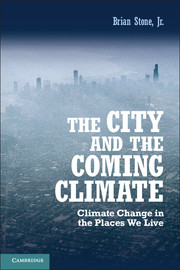2 - The Climate Barrier
Published online by Cambridge University Press: 05 June 2012
Summary
Six years before Europe's catastrophic heat wave, a hard freeze in southern Florida would reveal as much about the planet's changing climate as the extremity of the 2003 disaster. Although no one is reported to have perished in the winter storm, much of Florida's citrus crop was lost when subfreezing conditions persisted for two days in January 1997. In total, the crop losses – affecting not only oranges but also a wide range of winter vegetables – were estimated at more than $300 million, with prices for some produce rising by more than 80% and about 100,000 seasonal farm workers losing their winter employment [1, 2]. Long a hazard of the orange-growing industry, winter cold snaps are to be expected from time to time. But the extremity of this particular freeze was unlikely an act of Mother Nature alone.
That so much of the state's orange crop was clustered in southern Florida at the time of the storm was itself a byproduct of occasional freezes and crop losses in the preceding decades. In most respects, the northern half of the state provides superior growing conditions for the orange industry. The well-drained, sandy soils of northern Florida have traditionally required lower land-preparation costs and produced superior crop yields than the water-saturated and more disease-prone lands of southern Florida. As a result, virtually all orange growing by the mid-20th century was situated in the north-central portion of the state, around Orlando. Yet, the impacts of a few severe freezes in the early 1980s, culminating in the estimated loss of one of every three orange trees, would initiate a widespread migration to the southern reaches of the state where the historical frequency of such freezes was far lower. Over the decade of the 1980s, the five counties bordering Lake Okeechobee in the southern half of the state experienced an almost 90% increase in the number of orange trees, while a cluster of counties around Orlando witnessed a comparable decline [3].
- Type
- Chapter
- Information
- The City and the Coming ClimateClimate Change in the Places We Live, pp. 46 - 67Publisher: Cambridge University PressPrint publication year: 2012



